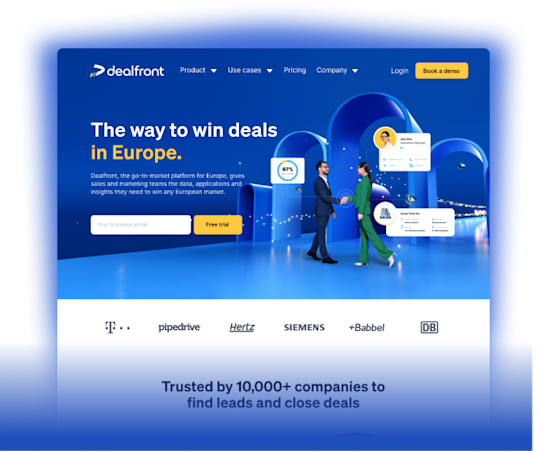60-Second Summary
Expanding your B2B sales into the Benelux region offers major opportunities—but only if you develop a strategy rooted in cultural understanding, regulatory compliance, and localized execution. From value propositions to outreach methods, every element must be finely tuned for Belgium, the Netherlands, and Luxembourg.
Understand Your Market and Audience: Define your Ideal Customer Profile (ICP) per country and industry; tailor your value proposition to solve local pain points and match decision-maker needs.
Master Regional Compliance and Localization: Align outreach methods with GDPR and national e-privacy laws; translate and localize marketing and sales materials to reflect language and cultural norms.
Leverage Trust-Building and Relationship Selling: Customize your approach to each country’s business etiquette—e.g., directness in the Netherlands, patience in Luxembourg, and formality in Wallonia—to establish credibility.
Track Performance and Iterate Strategically: Analyze key metrics like total revenue, win rates, and customer feedback to continuously refine your sales process based on real results.
How to Set Up a Winning B2B Sales Strategy for Benelux
Do you intend to bring your offering to market in Benelux? Then don’t go in unprepared because we’ll help you learn how to:
Understand what makes the Benelux market tick
Tailor your strategies to align with the region’s regulations and culture
Outplay your competition with localization and by building real trust
So just what does the Benelux region have to offer?
A quick overview of Benelux
Before you can start setting up your winning strategy, let’s look at the region a little bit closer.
What does Benelux stand for?
Benelux is a portmanteau, and consists of the following countries:
Be = Belgium
Ne = The Netherlands
Lux = Luxembourg
Together with France, Germany and Italy, the Benelux countries were part of the original six founding countries of the EU.
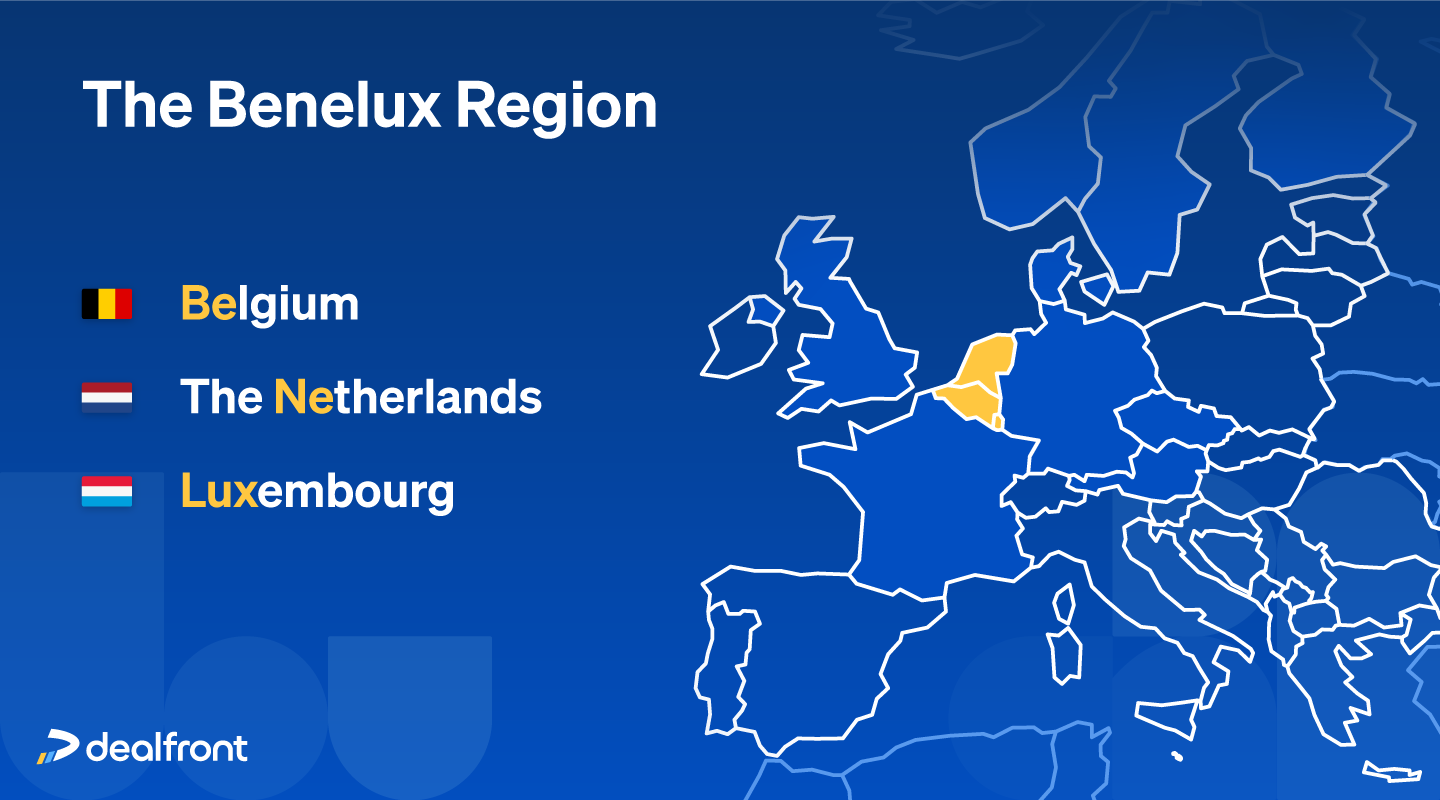
Economic Overview
Geographically small, but quite substantial in terms of GDP, the Benelux countries are strong candidates for your B2B business ventures.
Belgium is one of the richest countries in Europe–almost on par with Germany–and its main industries are manufacturing pharmaceutical and chemical products.
The Netherlands is much more than just windmills and tulips. This low-lying country is ideally set up for the agrifood and water technology industries. But, it also has thriving energy, IT, and healthcare and life sciences sectors.
One of the three seats (including Brussels and Strasbourg) of the EU, Luxembourg is small but mighty as it houses many European institutions. Known for its thriving banking and financial sectors, Luxembourg also is known to be a tax-friendly country.
You see that the region has a lot to offer in terms of wide-reaching industries so now we can start talking about a sales strategy.
The basics of a successful B2B sales strategy
Now that you have more insights into what makes the Benelux region tick, you can start honing your B2B sales strategy.
Identifying the Ideal Customer Profile
You want to be the go-to vendor for your industry or sector, but who is it you’re trying to do business with? To see success with your B2B marketing and sales efforts, you have to establish your Ideal Customer Profile (ICP).
Please keep in mind that an ICP isn’t the same as a buyer persona which defines a specific person you want to target with your content, for example. The ICP defines the type of company you want to do business with.
Here is some data you can use to define your ICP:
Company size
Industry
Annual revenue
Number of clients
Their target market
Company tech stack
Website visitors per month
Sales channels
Keep in mind that if you offer different tiers for your product or service, you’ll need to have multiple ICP definitions to cover that.
Developing a Strong Value Proposition
Your offerings are going to change how your customers do business but how can you convey that to them? In short, what do they gain by being your customers?
You will need to communicate:
How your product or service will help your customers either make more money or save costs.
How your product or service will streamline their business processes to boost efficiency and productivity.
How you can help them grow their business.
Your value proposition should target the right person within an organization. In an ideal situation this would be the decision-maker. People in different roles will need different things. The trick here is to figure out what their unique pains are and then figure out how to solve them.
It’s not just the B2B customer you need to understand, but also your competitors. There are many review sites out there so go see what your target customers are saying about them. What are the “weak areas” that you could exploit? Can you solve what they can’t?
Then, when you understand what your customers need and how your business can fulfill those needs, you’ll be equipped to move forward.
Building a Strong Sales Team
You might have the best strategy in place but you still need a superstar team to execute it. Our very own Dealfront sales leaders gave us their most desired salesperson traits:
Be a good listener
Be resilient and have grit
Be curious and willing to learn
Be self-motivated
Be ethical
Be persistent, but patient
Be authentic
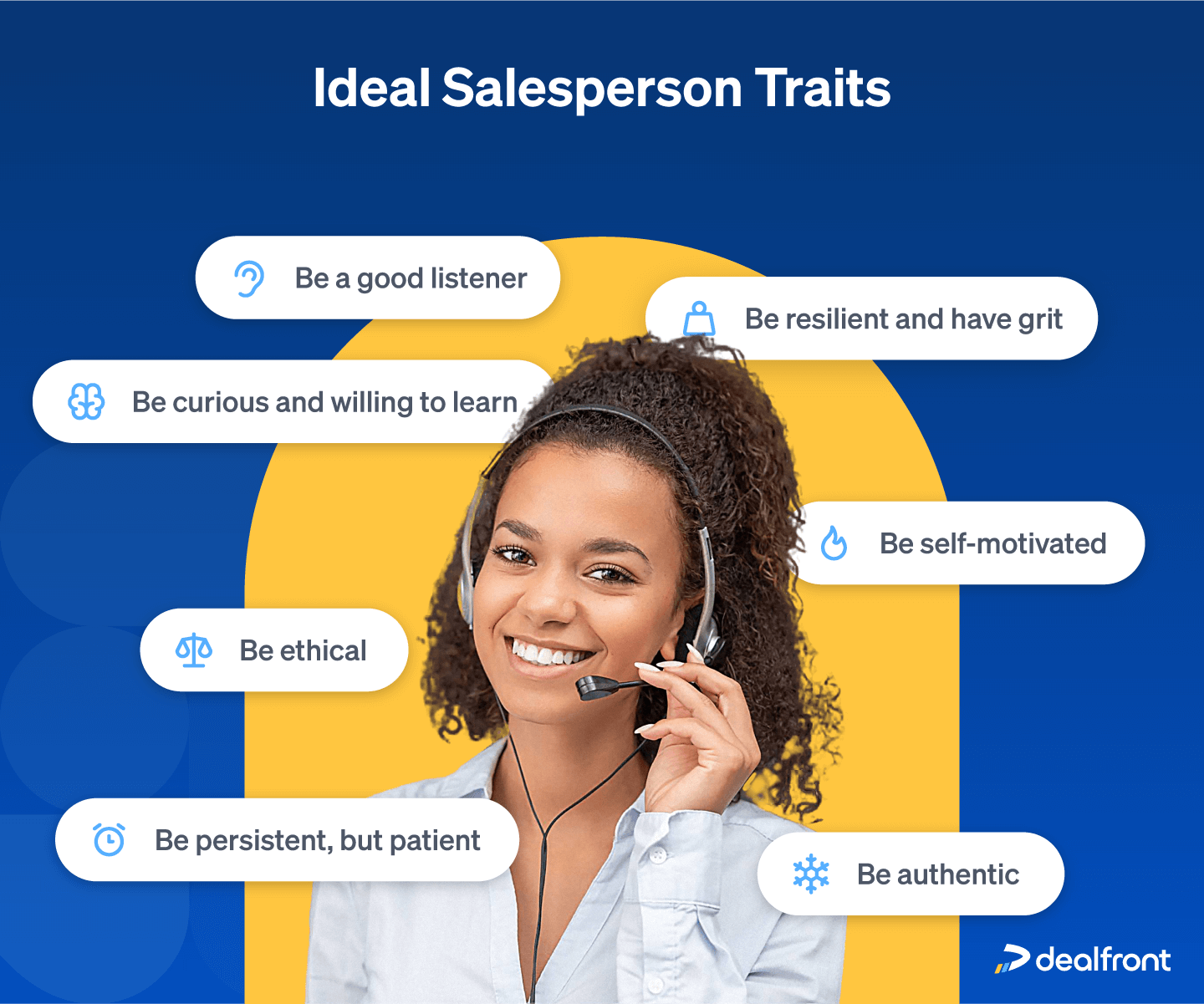
Our experts chose being a good listener as their #1 pick, which isn’t so surprising. While others may think that having a great talker is the key to sales, you know that listening is the key to building rapport from the start. Asking the right questions and really hearing the customer is half the battle already won.
But you can’t just put the team together and hope for the best just because they fulfill certain criteria. You need to have an onboarding process for new hires as well as consistent, ongoing training to make sure your team keeps excelling.
Setting Clear Objectives and Goals
Your sales team can’t just pick up a phone and call people. They need to have a clear idea of targets to work towards. Typically, sales team objectives and goals include the following:
Revenue goals per person/team: Define the amount and the timeframe.
Clear responsibilities: What should each team member be accountable for?
Milestones: These are the big events in the overall team timeline. What has to be done and by when.
Overall budget: How much is it and how realistic is the goal-setting within that amount?
Now that you have a framework, don’t keep it a secret. You want to align with other teams within your company. Studies have shown that strong internal alignment (especially with Marketing) can help scale revenue generation and improve overall efficiency.
Creating a Sales Process
You can’t just drag a prospect through your funnel just because you want to close deals. Winning a customer is the culmination of a lot of hard work and smart strategies. You and your team have to have a clear vision of what a successful customer journey looks like.
You have a lot of considerations to make in order to set up a process, but ultimately, you’ll have to experiment a little to see what works and what doesn’t. Especially when entering a new market.
Some key things to keep in mind before you start:
Try and involve the decision maker as early in the process as possible.
Research and implement compliant outreach methods for the region you’re targeting.
Personalize your process and outreach to fit your prospects. The more they feel you’ve tried to connect with them, the more likely you are to find success.
The sales process counterintuitively begins with the end goal. Yes, you read that correctly! You need to begin by asking yourself the following questions:
What is your target number of customers?
What is your target revenue?
What is your target revenue per customer?
Now, with those questions answered on your end, you can continue with the rest of the process.
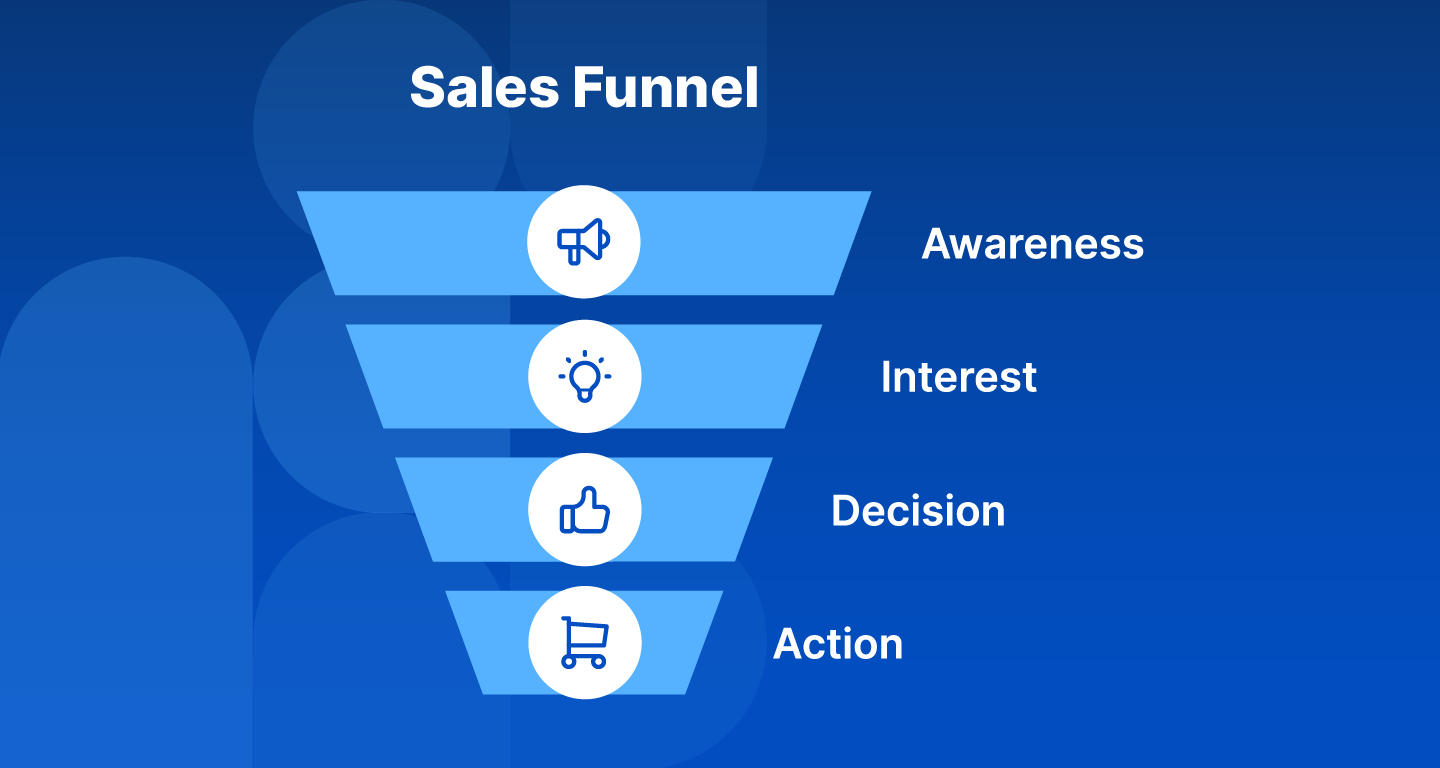
- 1.
Prospecting for leads: Trying to land leads can be a time-consuming and frustrating process. Especially when you’re trying to enter a new market, you have to take extra care. Knowing where your customers are is essential. If your target industry is finance or banking, you might want to look to Luxembourg when prospecting. How you prospect is also important. Is your target industry more online or off? Trade shows are pretty popular in Belgium and the Netherlands, so you could take advantage of the open atmosphere to reach out.
- 2.
Lead qualification: Leads are everywhere. But finding the right ones (qualified leads) is the trick to a successful customer journey. You want higher-quality leads that are more likely to convert because they’re in need of your offerings. You can use a tool like Leadfeeder to accurately gauge buying intent. Leadfeeder lets you identify who is visiting your website, what they’re looking at, and how they’re behaving while they’re there. Did they fill out a form to download a whitepaper or ebook? With strong intent signals like that, you can qualify those kinds of leads as higher quality.
- 3.
Outreach: Finding the right outreach method or channel isn’t the only consideration you have to make. You also have to keep your target market’s data privacy and outreach regulations in mind. You may have found the right contact but have you done your homework and found out if the method you’re using is compliant? Once you’ve found out where your customers are, and are using an outreach method that is data- and e-privacy compliant, how do you make your first impression impactful? In B2B, our inboxes are constantly inundated with sales pitches. And, if we’re honest, many of them end up in the trash. To avoid that, use Dealfront Connect to gain deep insights into your prospect. In Connect, you can set up alerts that let you know if the company is going through changes like an expansion to new markets or in management. So instead of sending a random, Hello {(First Name)}, you can reach with tailored pitch at exactly the right time.
- 4.
Discovery call: When you’ve landed that pitch, you’ll both want to go into a meeting to learn more. This is where you’ll try to discover if your offering and your prospect are a match. The discovery call is actually the most important part of the whole process because this is where you can uncover their pain points to position your product or service as the solution to help them. Don’t worry if you discover you might not be a good fit for each other. Sometimes the best salespeople are those that can say “Hey, we’d love to work with you but I don’t think our product will offer you what you need right now.” Whether you realize it or not, you’re still providing your prospect with value. They’ll understand that you want what’s best for them. And who knows, “not right now” could turn into an “I’m ready to talk again” in the future!
- 5.
Product presentation & demo: If the discovery call went well, you can now proceed by giving your prospect a demo. This would also be a great time to involve the decision maker if you haven’t already done so. You’ll be using this opportunity to show how your product/service addresses the pain(s) you uncovered in the discovery call. For example, if you’re presenting software, show them exactly how it solves the pain points they mentioned previously.
- 6.
Proposal: Dealing with objections is just part of a salesperson’s daily work. You have to listen to your prospect and figure out what the objection is really about. The best way to counter objections is to already plan for them going into a meeting. A lot of the time, a prospect will voice an objection but there’s something deeper behind it that you’ll need to uncover. Finding the underlying barrier is the real issue you need to deal with and not the actual objection itself. For example, “Your product is too expensive” might indicate they’re trying to get a discount, or they got a better rate from your competition. Asking the right questions will get you one step further to matching their problem to your solution and demonstrating its value.
- 7.
Close: Probably the most rewarding phase: winning the account. You’ve done the work to show the prospect the value of your offering, everyone has agreed to the sales conditions, and now can move forward with the closing.
- 8.
Customer retention: Many reps see the close as the end goal. It’s not. Customer retention is one of the most overlooked phases and it’s such a waste. If you closed the deal with one of your “smaller” solutions, think of that as getting your foot in the door. The opportunity to cross or upsell is super important and you should take advantage of it!
What else should you keep in mind when setting up your strategy?
Leveraging Technology
Having a great strategy also means having the right tools to bolster it. It would be so frustrating to have a strategy that looks good on paper, but is let down by tools that fail to support that in practice. Your tools should support your processes and workflows.
We suggest checking out the following solutions:
A reliable CRM system: SuperOffice / HubSpot / Salesforce
A practical prospecting and lead generation tool: Dealfront Target / Dealfront Connect
A tool for data hygiene and maintenance: Dealfront Datacare
A sales enablement tool: Calendly / Loom
A sales engagement tool: InsideSales (formerly Xant) / Outreach
A tool to create & sign contracts online: Pandadoc / Docusign
Tailoring Your B2B Sales Strategy for Benelux Market
Customizing Your Value Proposition
Until now, we’ve given you a general overview of what your strategy should look like. But, fine-tuning it to fit the Benelux market will push it that one step further so you can beat out your competitors. And ultimately, tailoring your strategy is also a win for your potential customers. To dig deeper into your target region, you need to ask yourself:
What does Benelux value more than other regions? For example, data security and GDPR compliance are important in this region. How can you or your offering leverage that?
Do each of the Benelux countries need something different? Just because they share languages in common doesn’t mean they have the same culture. You need to adjust your value proposition for each country.
Does your pricing structure fit your target company? You can’t try to enter a market with enterprise pricing if you have no organizations that match your criteria.
What are the unique pain points that your target customer in Benelux has compared to other markets? Many industries and companies (especially the more traditional ones) don’t do business in English. Can you outplay your competition here?
This brings us to the next point: localization.
Localizing Your Marketing Materials
English is considered the standard business language in many parts of the world, but offering your products and services in the language of your customers will help you shine. The Netherlands is known for its multilingual culture, but depending on the industry (especially in the more traditional ones), Dutch is still very widely spoken.
Belgium’s Dutch-speaking region is more open to dealing in English than their French-speaking fellow citizens. So, depending on where you are in Belgium you’ll have to adapt your materials.
Luxembourg is quite an international hub and doing business in English is widely accepted. However, if you want to have an advantage over your competition, you’d be wise to tailor your materials into either French or German.
Don’t forget, getting localization right isn’t just about translations, it’s about providing value to your customers because you kept their culture in mind as well. How do they prefer to consume content in the Benelux region? And in which channels are they most active? Once you’ve considered all of these aspects, you will be one step closer to winning in Benelux.
Adapting to Cultural Differences in Benelux
Just because countries share a language or are geographically close doesn’t mean their cultures are the same. Here are some tips to help you navigate the nuances of culture in the Benelux region and win customers:
Business culture in the Netherlands
The Dutch are an open, straightforward people that value directness and “getting to the point”. Prove yourself reliable by keeping appointments and being on time.
Business culture in Belgium
We mentioned before that you have to keep two cultures in mind here. So, depending on which part of Belgium you intend to do business in, you’ll have to adjust to fit the region.
In the Dutch-speaking part of Belgium, you can expect many similarities to the Netherlands where direct, efficient business dealings are expected and practiced. In the French-speaking region, you can expect more emphasis on relationship building and more social events built around business. For example, doing business over lunch with wine is quite common in the French part of Belgium.
Business culture in Luxembourg
Hierarchy and respect for those in a higher position is deeply valued in Luxembourg. Consensus decision making isn’t practiced, but that’s slowly changing. In contrast with the Netherlands, Luxembourg doesn’t rush through decision processes. You’ll have to learn to be patient here.
Building Relationships
Giving your customers in Benelux a personalized strategy that fits their needs is great! But why should you be making all this effort? To build higher levels of trust. You should see the process as a way of building long-term business relationships and meeting the customers’ needs. Retaining a valued customer is even more rewarding than gaining a new one. Showing that you can sustain the trust and goodwill of your customers will positively impact your business growth.
And speaking of trust, we’re about to move onto one of the trickier aspects of doing business in Benelux: How to adhere to GDPR and e-privacy regulations when you want to make that initial contact with a prospective customer.
Compliant B2B sales outreach in Benelux
If your target market is within the European Union (EU), you are going to have to get up to speed on the General Data Protection Regulations (GDPR) and local e-privacy regulations. While the GDPR is in place to regulate how you collect, process and store a person’s data, e-privacy regulations dictate how you reach out.
Before we dive in, it’s important to note that we’re not providing you with legal advice. If you require legal advice, please consult a lawyer you can guide and answer any specific questions related to your business case.
Now we can take a look at each of the Benelux countries and their respective e-privacy regulations:
The Netherlands: The Dutch Telecommunications Act
Belgium: The Code of Economic law and Electronic Communications Act
Luxembourg: The Electronic Communications Act
Cold calling
In Belgium, you will first be required to check the local “Do Not Call Me (DNCM)” lists and make sure that your prospect hasn’t already opted out of telemarketing. Once you’ve confirmed that they’re not opted out, you can proceed with your outreach via phone.
In the Netherlands and Luxembourg, you will need prior opt-in consent or a prior business relationship in order to reach out over the telephone. And of course, don’t contact a prospect if they are on a “Do Not Call” list.
In all cases you will need to make opting out transparent and easy should they non longer wish to be contacted by your company in the future.
Cold emailing
In all three countries, your prospect will need to opt-in to be contacted via email or have a prior business relationship with you. That means, either they must give consent prior to being contacted for advertising purposes or you have collected their email address because they were recently a customer for a similar product of your company.
In Belgium, there is one exception: you are allowed to send marketing emails to a company (even if it is not a customer) without prior consent or business relation, if the email is sent to a business, non-personal email address (such as “info@company.com”) and you are promoting a product or service that fits to the needs of the company targeted.
Social selling
Social selling is a legally gray area in all Benelux countries. Since business networks like LinkedIn are set up for business dealings, reaching out via direct message is often not objected to, but be sure your offering matches your prospect’s needs: : If they’re in the medical field, don’t try and sell them a tractor. Also, be sure to review, and comply with the terms and conditions of the social channel you are using for social selling. Some special rules may apply.
Trade Shows and Conferences
B2B trade shows and conferences are popular in Benelux, particularly in the Netherlands and Belgium. They are a great way to generate leads in a compliant way as these events are set up for B2B business interactions, including sales.
But don’t forget, even if a prospect agrees to give you their business contact information, you still need to:
- 1.
Inform them on how you plan to process and store their contact information.
- 2.
Give them information on how they can opt out.
So now all the foundation of your strategy has been planned and built. Once it’s been launched, how do you know it’s working?
Measuring and Analyzing Your B2B Sales Strategy
Unlike a “set it and forget it” oven, keeping a close eye on your strategy plays a crucial role in its success. You need to monitor, measure and analyze it in order to gauge its effectiveness.
If you’re able to compare data, you’ll be able to see any changes on a weekly, monthly or quarterly basis. You can take the results of your analysis to keep doing what’s going right or to further refine what didn’t go so well to improve on it.
Which metrics should you be tracking?
Key Metrics to Track
Total revenue: This can be measured monthly, quarterly, or annually.
ARR (annual recurring revenue): This is the recurring revenue projected for a year.
ARPA (average revenue per account): The average revenue generated per account. This can be calculated on a monthly or yearly basis.
Average Sales Cycle: The amount of time from your first touch with a prospect to closing the deal.
Conversion rate: This is used to measure the effectiveness of a sales strategy or your team when it comes to converting leads into new customers
Main Activities: Used to measure your team's input based on discovery calls, demos, and negotiations. Measured on a weekly, monthly or quarterly basis.
Win rate: Your successfully closed deals.
Revenue of new vs. existing customers: A comparison of what your new vs. current accounts are bringing in.
Quota attainment: Displayed as a percentage and shows a salesperson’s total sales.
Sales Forecasting
In a nutshell, sales forecasting is a sales revenue projection to give you the answers to how much and by when. You want to know about your prospective customer, and what they can offer your business. If you’ve done a thorough preparation with your sales process planning, your forecast has a better chance of being accurate.
Sales Performance Analysis
A good sports coach always has their eye on team performance, and Sales should be no different. You’ll want to analyze if your sales reps are achieving their targets, and if not, how you can support them to get there. Analyzing your sales performance will give you the current status so you can measure it against your goals.
Customer Feedback
Getting feedback is incredibly valuable to anyone wanting to assess how well a strategy has come together. Managing your online reputation is a key factor in solidifying your brand, so this isn’t something you should skip. You’ll want to make the barriers for people to give feedback as low as possible.
Before you can reach out, you need to ask yourself:
Why do you want their feedback? What are you trying to improve?
Do you have information for the customer about their privacy with data collection and processing?
Which channel or method will be most effective in feedback collection?
Some low-barrier ways of how you can collect feedback are on review platforms or social media. If you want more valuable, in-depth feedback you can collect customer testimonials or ask them to fill out a feedback survey.
Best Practices for B2B Sales in Benelux Market
Entering Belgium, the Netherlands and/or Luxemburg will require some careful planning and determination. However, if you know your product or service is exactly what the region needs, it’s absolutely worth it. Now, all that’s left is to put it all together.
Here are the 4 best practices to find B2B sales success in Benelux:
- 1.
Build strong customer relationships You’re trying to build a long-term relationship with a customer base that is loyal to your business. Belgians seek mutual agreement, so take the focus off winning and more on finding common ground. You’ll also have to keep it more formal in the French-speaking than in the Dutch-speaking region. Keep business communications direct and business-focused to win over the Dutch. They have a reputation for being steadfast in negotiations. So be ready to dig in deep! Luxembourg values a more traditional business culture. The higher up the chain you go, the more respect you have to show for their position. Decision-making tends to be slow and more careful, so be patient. In all regions, you’ll need to be punctual in order to build strong relationships. You don’t want to just provide a quick fix. By building trust and putting your customers at the center, you’ll be turning them into your biggest fans.
- 2.
Invest in local talent If your customers are your focus, then a great way to build strong relationships is to invest in local talent. Give your prospect or customer localized or personalized touch points along the whole customer journey with you. For example, if you’re moving into the Belgian market, make sure you localize for the region: French or Dutch. Going through the sales, onboarding process with someone who speaks their language and understands their culture puts you far ahead of your competition!
- 3.
Offer exceptional customer service Having a great, localized customer service team in place is essential for the relationship building you’re doing with your customer. Benelux values efficiency in solving issues and that your CS team is knowledgeable. Don’t waste the customers’ time by asking them to hold while they seek help from a manager on this issue.
- 4.
Stay compliant with local regulations Non-compliance can lead to lost trust and lost money if you get fined. To prevent that, be sure you are up-to-date on the local regulations, not just the ones in the EU. Ideally, you’ll have a data protection officer who has set up a data compliance strategy for your whole organization. When you’re aligned internally, your customers will know that you’re doing everything you can to keep their data safe.
What can push you even further? Having a platform that can work for and with you to streamline your GTM ambitions.
How Dealfront Can Help You to Develop a Winning B2B Sales Strategy for Benelux Market
Dealfront is the go-to-market platform made in Europe that combines the tools and stages of the sales and marketing process into one platform. We have five tools that power a flywheel to give you a powerful, full-service, completely GDPR-compliant platform.
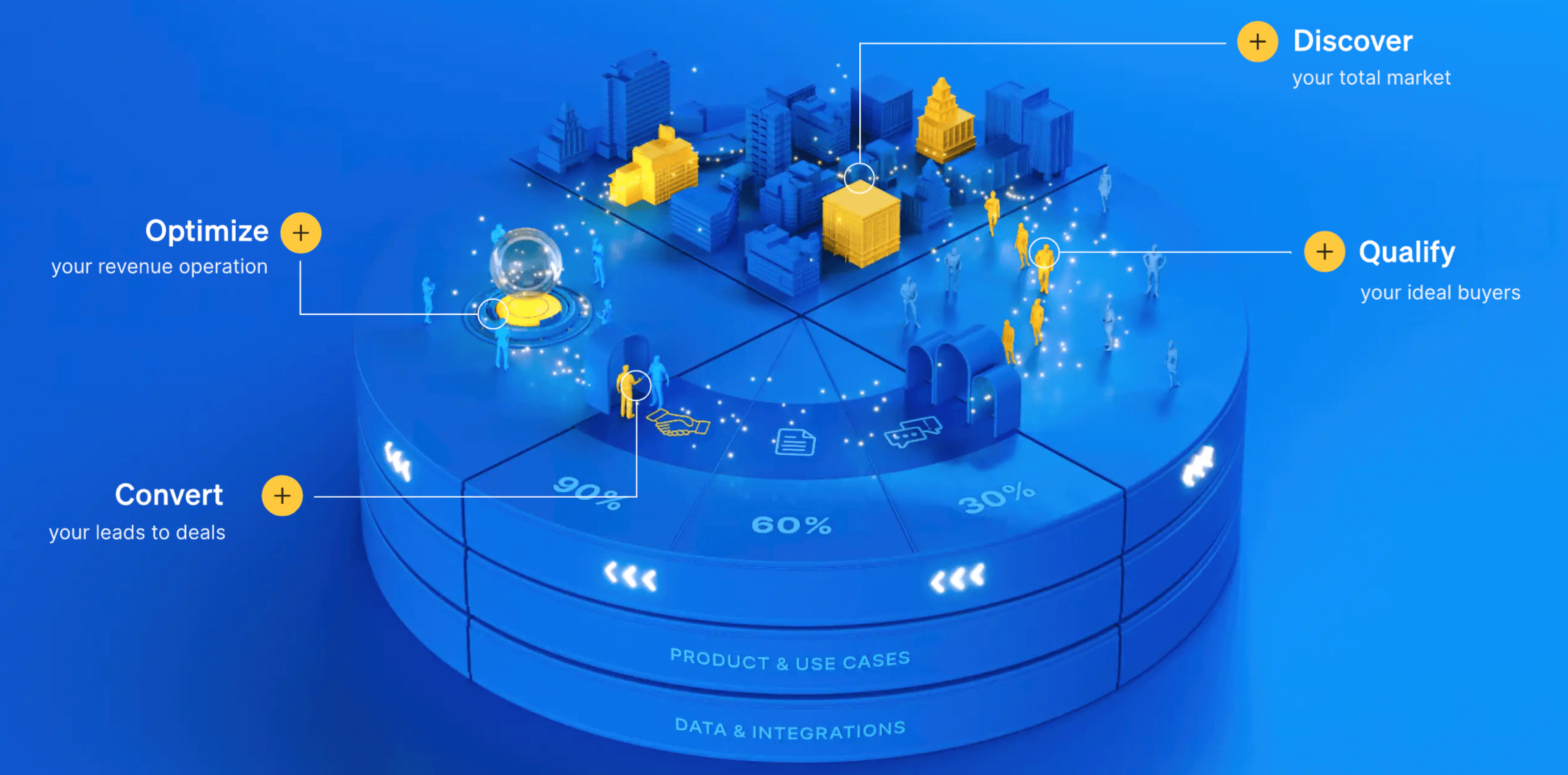
- 1.
Discover: Unlock your total addressable market (TAM).
- 2.
Qualify: Refine and prioritize your ideal customer profiles.
- 3.
Convert: Reach the right buyers with the right message at the perfect time.
- 4.
Optimize: Multiply your deals won using AI and machine learning algorithms to find B2B lookalikes.
What you’ll end up with is accuracy that’s being constantly refined, real-time and dynamic ICPs, and a higher rate of closed deals!
What now?
Now that we’ve unpacked the B2B sales strategy for Benelux, there shouldn’t be anything stopping you from diving into this market. You now understand how the region ticks both culturally and on a business level.
All that’s left is for you to use this knowledge to tailor to your prospective customers so you can always be two steps ahead of your competitors.
